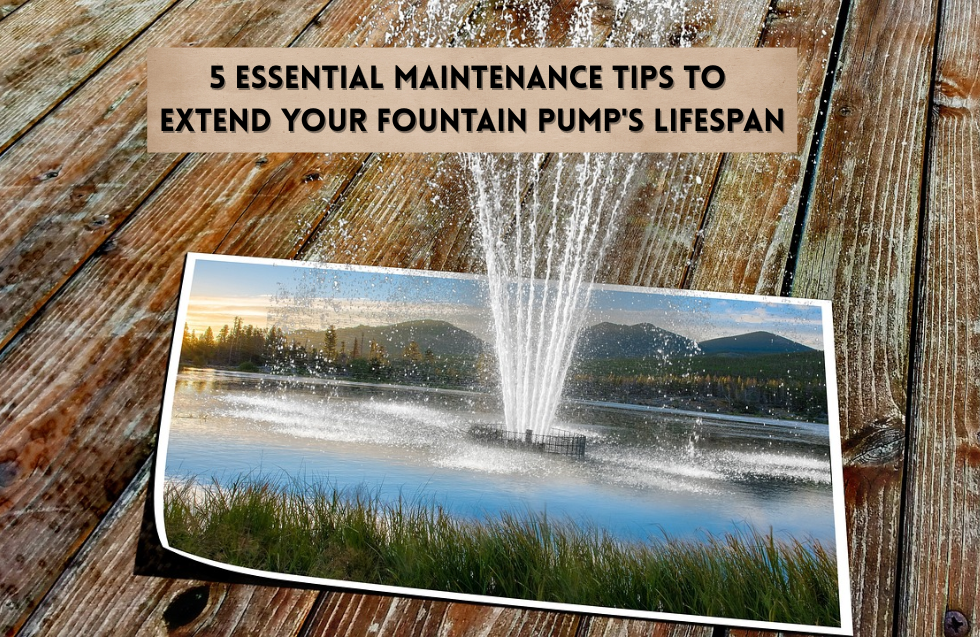Ugh—that horrible grinding noise. If you’ve owned a water feature for any length of time, you know exactly what I’m talking about. It’s the sound no fountain owner wants to hear, because it usually means one thing: your pump is on its last legs.
Most folks who reach out to Fountain Tech Company have a similar story. They installed their beautiful water feature, enjoyed it for a season or two, then suddenly found themselves shopping for replacement equipment way sooner than expected. What gives? Turns out, pumps don’t exactly thrive on neglect (shocking, right?).
1. Clean That Thing Already!
Let’s be honest—nobody gets excited about rolling up their sleeves and cleaning pump components. But here’s the brutal truth: gunk is your pump’s arch-nemesis.
I once helped a neighbor who complained about his “defective” pump that “only lasted a year.” When we pulled it out? The intake was so clogged with leaves and algae that water could barely trickle through. The poor thing had been working overtime for months, essentially trying to breathe through a coffee stirrer.
Do this instead:
- Kill the power (seriously, don’t skip this step)
- Fish out the visible gunk from the cage
- Take the thing apart (check the manual if you’ve forgotten how)
- Scrub the impeller with an old toothbrush
- Soak stubborn mineral buildup in vinegar
- Rinse everything thoroughly before putting it back together
During fall? Check weekly. Those pretty autumn leaves love nothing more than committing pump suicide.
2. Water Levels Matter More Than You Think
Ever run a marathon while breathing through a straw? That’s basically what your pump does when water levels drop too low. That whining noise isn’t just annoying—it’s your pump’s desperate cry for help.
Summer evaporation happens FAST. One hot weekend away from home, and your pump could be sucking air instead of water. That’s a one-way ticket to Replacement Town, population: your wallet.
Some folks install auto-fill devices, which aren’t a bad idea. But honestly? A weekly water level check takes 30 seconds and can save hundreds in pump replacement costs.
3. Winter Is Coming (And It Wants to Kill Your Pump)
True story: about 65% of replacement pumps are sold in early spring. Coincidence? Nope. Just the aftermath of freeze damage.
Water expands when frozen. Pumps filled with water crack when frozen. It’s simple, destructive math.
If you live somewhere that sees frost:
- Yank that pump before temperatures drop
- Scrub it down properly
- Store somewhere dry AND unfrozen
- For submersible models, keep the seals happy with a water bath
- Set a calendar reminder to run it briefly mid-winter
Even in warmer spots, giving your pump a seasonal vacation for deep cleaning pays dividends in longevity.
4. Pre-Filters: The $15 Solution to a $200 Problem
Why do all the cleaning yourself when you can make debris clean itself up? That’s essentially what pre-filters do.
These mesh screens or sponges catch leaves, twigs, and other crud before they can reach your pump’s delicate parts. The best part? They’re cheap. Like, “less than two pizza deliveries” cheap.
Just make sure whatever you buy matches your pump’s flow capacity. Too restrictive, and your water barely moves. Too loose, and junk still gets through. When in doubt, check your pump’s GPH rating and find a compatible pre-filter.
5. Electricity and Water: A Relationship That Needs Supervision
The invisible pump killer? Electrical issues. Beneath the surface of your peaceful fountain, electricity and water are engaged in a constant standoff. Your job is making sure they maintain appropriate boundaries.
Regular electrical maintenance isn’t sexy, but neither is electrocution or fried pump circuits:
- Check cords for cracks (especially where they bend)
- Keep connections high and dry when possible
- Test those GFCI outlets monthly (the little button isn’t decorative!)
- Consider a basic surge protector—thunderstorms have no respect for your pump investment
- Make sure transformers have breathing room and stay dry
During nasty storms? Unplug everything. Better safe than sorry.
The Math Nobody Wants to Do
A decent pump should last 5+ years with proper TLC. Without maintenance? You’re looking at annual replacements.
Do the math: $150-400 for a new pump every year or two, plus the hassle factor, potential water damage, and the disappointment of a feature that’s constantly out of commission.
The alternative? About 30 minutes of maintenance monthly. Seems like a no-brainer when you put it that way.
Bottom line: water features should bring joy, not drain bank accounts. A little preventative care goes a ridiculously long way in keeping your fountain running smoothly season after season.
Quick Troubleshooting When Problems Arise
Despite your best maintenance efforts, pumps occasionally act up. Before panicking and ordering a replacement, try these quick fixes:
If your pump is running but not moving water, check for airlocks. Simply tilt the pump slightly underwater to release trapped air bubbles.
Weird noises? First suspect is always debris around the impeller. A quick cleaning often solves the mystery.
Weak water flow might indicate clogging, but could also mean your pump is fighting against too much head height. Remember that pumping water uphill reduces flow rate significantly—sometimes by 75% or more compared to the rated GPH.
When all else fails, sometimes the simplest solution works best: unplug everything for 30 minutes and restart. You’d be surprised how often this tech support classic resolves pump issues.












